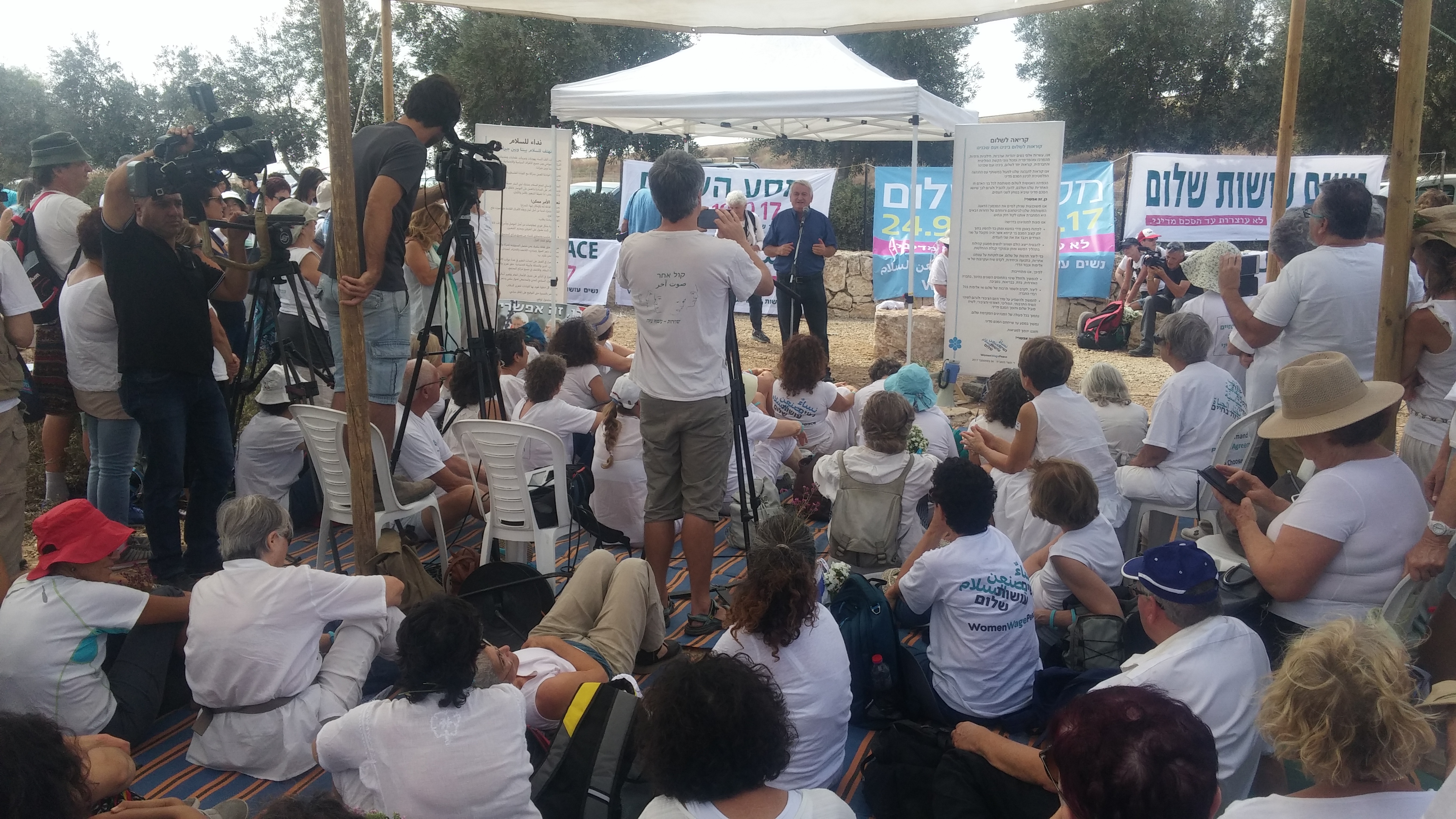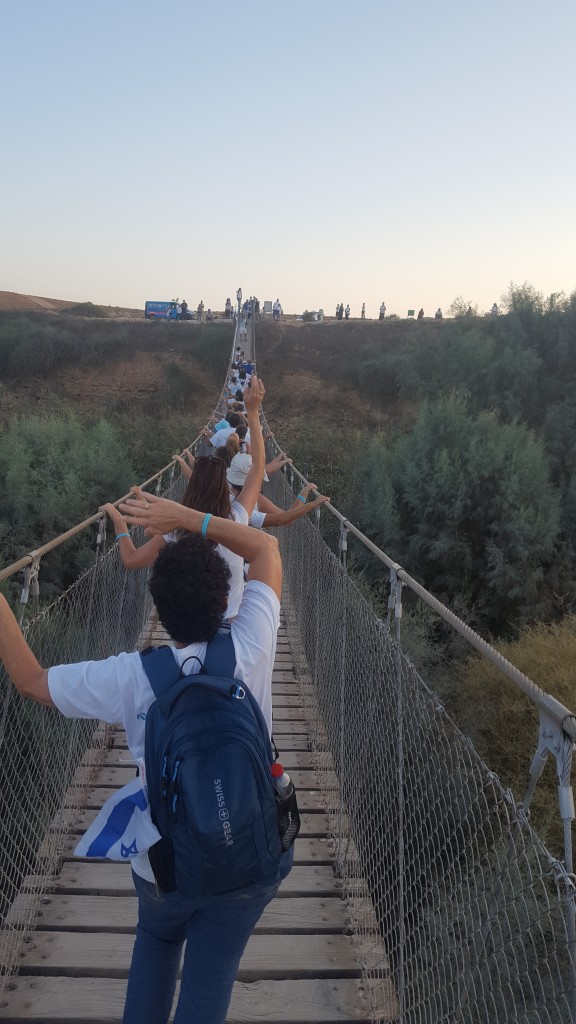Within the first month of interning at EcoPeace, we traveled in person to places of  importance as it concerns boundary areas and transboundary water basins, starting near Gaza in the lower part of the Hebron-Besor-Gaza Basin, making our way to the upper part towards Hebron. Through our travels, it became clear that water issues are not restricted to one area or people, rather, it is an issue that concerns many communities throughout the region. Furthermore, it became apparent that cooperation and understanding are essential to effectively address transboundary issues.
importance as it concerns boundary areas and transboundary water basins, starting near Gaza in the lower part of the Hebron-Besor-Gaza Basin, making our way to the upper part towards Hebron. Through our travels, it became clear that water issues are not restricted to one area or people, rather, it is an issue that concerns many communities throughout the region. Furthermore, it became apparent that cooperation and understanding are essential to effectively address transboundary issues.
As EcoPeace representatives, we joined the first of eleven days of The Journey to Peace 2017, organized by Women Wage Peace. The journey started in Sderot on Sunday, 24 September. The goal of the events is to bring Israelis of all political and religious spectrums together with Palestinians to spread the notion that peace in the region between all parties is possible, starting with peaceful interaction.
The theme of the first day’s journey took us through historically significant areas and sparked lively group discussions with reference to the past rift between Abraham’s wives, Sarah and Hagar, the mother’s of Ismail and Isaac (forefathers of Muslims and Jews, respectively), and the possibility to reconcile those feelings of dislike by bringing peace between the different sides in current times.
The day commenced with a demonstration along a busy road in Sderot, in the south of Israel near Gaza. Women as well as men walked and sang along the road, some holding flowers and a few proudly displaying the banner of the Women Wage Peace organization. Cars passed, honking or waving in support.
The procession made its way to a junction where three arches stood, embodying the name of the area, Sha’ar HaNegev, gateway to the Negev. Here is where the opening ceremony took place. Regional authorities gave speeches and the organization’s declaration of peace was read aloud.
 Next, the group spent lunch listening to personal stories of people who lived within communities of the Negev: often times stories involving experiences of violence, but hoping for and working towards a better, peaceful future.
Next, the group spent lunch listening to personal stories of people who lived within communities of the Negev: often times stories involving experiences of violence, but hoping for and working towards a better, peaceful future.
We then arrived at a kibbutz, the proximity such that one could see an open waste dump in the bordering Gaza strip. The waste management in Gaza is a concern for Palestinians and Israelis alike, as water contamination from poorly treated sewage has contaminated beaches on both sides of the border. Ultimately, transboundary water issues show the necessity for Israelis and Palestinians to work together. Meanwhile, in the kibbutz, study groups were formed, and biblical and modern texts were discussed in connection to what lessons one may take from the readings regarding relationships between people.
 The last activity was that of crossing the rope bridge that hangs over a wadi, the river Besor, in the lower part of the water basin that runs from Hebron in the West Bank down through the south of Israel (Negev) through Gaza to the Mediterranean. This activity was symbolic of engaging and making peace between the various parties.
The last activity was that of crossing the rope bridge that hangs over a wadi, the river Besor, in the lower part of the water basin that runs from Hebron in the West Bank down through the south of Israel (Negev) through Gaza to the Mediterranean. This activity was symbolic of engaging and making peace between the various parties.
On Wednesday morning of the same week, we traveled to the upper part of the basin to meet at a Bedouin secondary school in Um Batin, where we learned of some troubles that they had with attaining a marked bus stop and crossing sign to safely access public transportation to school, and the continued question of whether or not the local water was safe for domestic use, despite having been through two rounds of treatment so far. The murky green appearance and evident pollution, such as plastic bottles, made the reason for questioning very clear.
The visit to the Bedouin village was a milestone in the Women Wage Peace organization’s history, and it is with great hope and expectation that each party works together in the future to make everyone in the region more equal.
While the events effectively fostered dialogue between all communities, it was surprising to notice the disparity between age groups and the low turnout of youth during the peace demonstrations. The demonstration taking place on Sunday, one could argue that most of them were kept busy in school or in the army. Yet, it seems the issue of peaceful entente is losing momentum among Israeli youth. The elderly who are genuinely contributing to this endeavor will need to be relayed soon enough, displaying the necessity for the youth to get more involved in such issues.
Overall, each day was full of talks and discussion, often accompanied with song and dance, an example of peace and harmony that is hoped for between all Israelis and Palestinians, and all nations for that matter, in the future. Through dialogue, openness to other perspectives and empathy with fellow human beings, the shared goal of peace becomes more easily attainable.
Written by Samy Graia and Racquelle Ramirez, interns of EcoPeace at the Tel Aviv office